Johnny Molson: For the past few episodes, we’ve been talking about the importance of consistency in your advertising. This golden thread that moves through your ads. You don’t just have a series of ads, but you actually have a campaign. How do you tie these things together? And another question that often comes up in relation to that is, is it better to have a bunch of little 15 second ads? Do you go ahead and do a full 60 second ad? Is a short post better than a long post? If you’re doing direct mail, is a quick postcard better than a long letter? We’re going to talk about all those things and the coveted “How do you become viral?” question gets answered as well.
These are conversations that we’re having with each other around the Wizard’s Roundtable and with our clients. On today’s episode, we have a great writer, Jeff Sexton, who is in Pensacola, Florida. In Austin, Texas, Joe Hamilton handles a lot of media buying. In Toronto, Canada, Gary Bernier, who handles a lot on the digital side, and Stephen Semple, who is an expert in direct response advertising. And I’m Johnny Molson in Springfield, Illinois.
We’re going to start with Joe Hamilton asking this question. Do you want a short ad? Do you want a long ad? Does it matter?
Joe Hamilton: So the golden thread Johnny that you mentioned is actually going to be coming back a little bit to frequency. And then there’s another portion to that. And this is kind of a Jeff / Stephen / Gary thing more than it is me — it’s length of the ad. Determining if it’s going to be a 30 second or 15 seconds or a full 60 seconds. And how many people are still going to give you a full minute of their life to listen to everything that you’re saying on that one ad?
Johnny Molson: Provided it’s a compelling story, I think they’ll stick with ya. You know, there are any number of two and a half hour Marvel movies out there where people willingly sit in the dark with their legs crossed, never going to the bathroom once, because they’re compelled and gripped in there.
And I think that really does speak then to the content of how relevant is this to me. If it’s not something that’s involving me and engaging me, then 15 seconds is too long. I don’t think there’s any magic necessarily to the length of an ad any more than the size of an ad online.
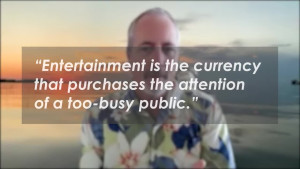 Stephen Semple: Well, we see that when there’s been testing done on long form copy versus short form copy in direct mail. And what has been proven over and over again is that long form copy actually polls really well. Now the challenge is crappy copy: you’re going to bail out in short form and you’re going to bail in long form. And it is harder to hold somebody longer, but if I can hold them longer, it’s actually more compelling. So it’s a bigger challenge with a bigger payoff, if you’re able to hold them with that entertainment. But that’s now all of a sudden the entertainment factor. Like we’re always saying, entertainment is that is the currency we use to buy the time and the attention. So yeah, if it’s 60 seconds I probably don’t need twice the entertainment. I probably need three times the entertainment to hold the person versus the 30 seconds. So it just has to be just that much more entertaining.
Stephen Semple: Well, we see that when there’s been testing done on long form copy versus short form copy in direct mail. And what has been proven over and over again is that long form copy actually polls really well. Now the challenge is crappy copy: you’re going to bail out in short form and you’re going to bail in long form. And it is harder to hold somebody longer, but if I can hold them longer, it’s actually more compelling. So it’s a bigger challenge with a bigger payoff, if you’re able to hold them with that entertainment. But that’s now all of a sudden the entertainment factor. Like we’re always saying, entertainment is that is the currency we use to buy the time and the attention. So yeah, if it’s 60 seconds I probably don’t need twice the entertainment. I probably need three times the entertainment to hold the person versus the 30 seconds. So it just has to be just that much more entertaining.
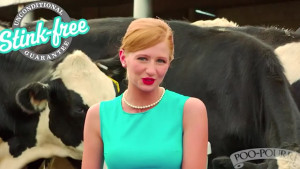 Jeff Sexton: I think of it like this. People have a hard time with audio, picturing it and understanding sometimes, more than visual. You think about a billboard? If the billboard is bland, you’ll never notice it. You’ll drive right by it. But if it’s high impact, you’ll notice it the first week or so that you drive by it and eventually it’ll become invisible until another high impact billboard is put up. And then you’ll notice it again. So the idea is to swap out the billboards at about the time it’s becoming invisible with another high impact billboard that is thematically and messaging consistent for the brand. Because even a very entertaining ad — one that would go viral, one that you send people to look at, like Poo-Pourri — after a while you’ve seen it. You don’t want to watch it anymore, right? So you could try to use shortness as in like Geico pre-roll ads. You can’t stop them. We’ve already got our message in within five seconds. Right? But if you, if you want to do entertainment and tell a story, I don’t think 30 seconds vs 60 seconds matters so long as it’s entertaining.
Jeff Sexton: I think of it like this. People have a hard time with audio, picturing it and understanding sometimes, more than visual. You think about a billboard? If the billboard is bland, you’ll never notice it. You’ll drive right by it. But if it’s high impact, you’ll notice it the first week or so that you drive by it and eventually it’ll become invisible until another high impact billboard is put up. And then you’ll notice it again. So the idea is to swap out the billboards at about the time it’s becoming invisible with another high impact billboard that is thematically and messaging consistent for the brand. Because even a very entertaining ad — one that would go viral, one that you send people to look at, like Poo-Pourri — after a while you’ve seen it. You don’t want to watch it anymore, right? So you could try to use shortness as in like Geico pre-roll ads. You can’t stop them. We’ve already got our message in within five seconds. Right? But if you, if you want to do entertainment and tell a story, I don’t think 30 seconds vs 60 seconds matters so long as it’s entertaining.
Joe Hamilton: And there’s one very easy way to prove that the content is king and that people will listen to your ads. And it’s because once a year, people tune in and have watch parties at the Super Bowl and they are there to watch commercials. The Super Bowl sometimes is a little bit of an interruption to their commercial watching. But those watch parties are there simply to see and vote on the best commercial that they’ve seen. And they don’t do it by the 20 of them. They do it by the millions. Right? And so that’s extraordinarily important and my thought has always been, if we can do it once a year or why can’t we do it all damn year long?
Johnny Molson: Indeed.
Gary Bernier: Well, I think to Johnny’s point, he makes a good point about the movie. A movie can capture attention. You can be totally engrossed the first time you watch it. If you then turned around and watched that same movie two days later, are you going to be that deeply engrossed? And then by Friday, watch it two days later, are you still deeply engrossed? And so when Jeff’s talking about message fatigue, if you just looked at the pattern of watching a movie, it doesn’t matter how entertaining it is. It goes down a little bit on each viewing. It’s not that don’t enjoy it. It’s just you expect things. You know things are coming. You’re not as surprised. It loses a little bit. You still love it, but it loses a little bit of the pizazz each time you go through it. And that’s what we’re talking about with ad fatigue. It’s the same sort of idea. So yeah, you get the first time somebody hears something, you have your best chance to deliver the 100% entertainment factor. And each time after that, it decreases by a little bit and then requires the rotation. We need the new Guardians movie, right?
Stephen Semple: I would like to address the elephant in the room since our topic is repetition. So if you think about whether I’m doing magazines or whether I’m doing billboards or whether I’m doing radio or whether I’m doing television or whether I’m doing direct mail… If I’m doing any of those media, I have an ability to at least try — if my messaging is correct and the envelope gets opened, the billboard gets seen. But if my hook is correct, I’ve got a way of creating repetition. And in fact, predicting what that repetition is probably going to be. I have a hope. I have a fighting chance at doing it. Now let’s go online.
Gary and I have been working on this a fair bit. How do you control repetition in an online environment? It is virtually impossible. It is a guessing game. And the best marketers out there online will do something along the lines where I bring you to the website. I get you to sign up for something. And I get an email campaign follow-up. Hopefully it’s got the right things for open rates. That’s repetition, people. Without something like that, how do I get repetition? How do I get predictable repetition on Facebook or YouTube or any of these other things? This is the challenge to online marketing.
Jeff Sexton: If you think about online, how much the web has changed from like early two thousands to now, right? It’s dramatic change. But for all that time the most economically productive tool that marketers have had has been email, bar none.
And that’s because when you have them on an email list, what do you get to control?
Gary Bernier: Well, you’ve got a captive audience. Any of the online mechanisms where you’ve built an audience and you’re speaking to your audience, you can create repetition with that audience.
Johnny Molson: You can control frequency.
Gary Bernier: You can’t necessarily control frequency, but you at least have a bit of the dial because you have an audience, right?
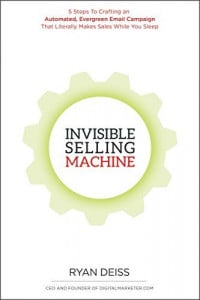 Stephen Semple: And Ryan Deiss’s book, Invisible Selling Machine, talks about that quite in depth in terms of the techniques for that. But it is the challenge to the online marketing environment. And look, this is the reason why, when you look at the biggest online companies, they also have an offline campaign. They have an offline campaign because we know it’s great for SEO. Direct traffic is the number one thing for SEO. But it’s also the cornerstone that’s going to build a part of your repetition. It’s part of the predictable nature of your marketing. The online world is highly uncontrollable, highly unpredictable, and very, very difficult to solve the problem with money.
Stephen Semple: And Ryan Deiss’s book, Invisible Selling Machine, talks about that quite in depth in terms of the techniques for that. But it is the challenge to the online marketing environment. And look, this is the reason why, when you look at the biggest online companies, they also have an offline campaign. They have an offline campaign because we know it’s great for SEO. Direct traffic is the number one thing for SEO. But it’s also the cornerstone that’s going to build a part of your repetition. It’s part of the predictable nature of your marketing. The online world is highly uncontrollable, highly unpredictable, and very, very difficult to solve the problem with money.
Joe Hamilton: Well, here’s the other thing that I enjoy saying. I like to point out you can spin your wheel all day long with millions and millions of dollars trying to make one ad go viral. Whereas you can get on a billboard or you can get on the radio or television and you can have that same viral audience within 30 to 60 seconds.
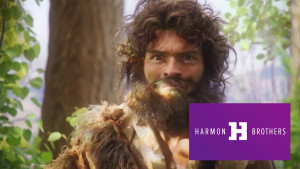 Stephen Semple: And here’s the other interesting thing about viral videos. First of all, the average length of time that something is on the web before it goes viral… There’s exceptions to the rule, but the average amount of time (the last time I looked at the stats) was 12 to 18 months. So your expectations… Guess what? If you actually are successful, then a year from now you’ll see things happen. How’s that sound for you? The other interesting thing, and Gary, you can talk about this a little bit more… But Gary was at a presentation about a year ago where it was the Harmon Brothers presenting. The creators of Poo-Pourri and all those unbelievable viral videos. Right? And what did they say about viral videos, Gary?
Stephen Semple: And here’s the other interesting thing about viral videos. First of all, the average length of time that something is on the web before it goes viral… There’s exceptions to the rule, but the average amount of time (the last time I looked at the stats) was 12 to 18 months. So your expectations… Guess what? If you actually are successful, then a year from now you’ll see things happen. How’s that sound for you? The other interesting thing, and Gary, you can talk about this a little bit more… But Gary was at a presentation about a year ago where it was the Harmon Brothers presenting. The creators of Poo-Pourri and all those unbelievable viral videos. Right? And what did they say about viral videos, Gary?
Gary Bernier: We don’t set out to make viral videos. If it happens, that’s a great byproduct, but we don’t make viral videos.
Stephen Semple: So the people who are the best on the damn planet at doing it go, “Yeah, we have no idea which stinking video is going to go viral. If it happens, bonus.” Meanwhile, some schmuck with a camera in his basement is going to go, “I’m going to make some viral video for you.” Yeah, right…
Jeff Sexton: Well, the people who are professionals at making entertaining video — movie people. They budget as much money to market the film as to produce it, minimum.
Stephen Semple: And then your ad goes viral, what have you got? You have reach. Do you have frequency?
Johnny Molson: For 48 hours, maybe?
Stephen Semple: Well, you don’t even know. You don’t even know how many people have watched it over and over again.
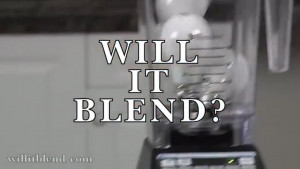 Jeff Sexton: And this is why I think the web tends towards direct response, right? Direct response, in the form of AdWords, you don’t have to worry about being entertaining because they’re in the market. You just have to be relevant with your keywords in your ad. So you don’t have to worry so much about repetition. You’re going to have to worry about closing them. And with the Harmon Brothers ad, they are direct response. They’re entertaining, but they’re still direct response. They are looking to close you at the end of the sales pitch. They don’t really want to hear you saying “this a such a great video.” They want to hear you saying “take my money.” When we’re talking about branding, branding requires some entertainment. Because most of the people seeing your ad or hearing your ad are not in the market. And it requires repetition. And so it’s a very different game. And this is why online typically hasn’t been a great play for building a brand. What will you find with like Blendtec — they built their brand online and they had viral video. But they had a campaign of viral videos.
Jeff Sexton: And this is why I think the web tends towards direct response, right? Direct response, in the form of AdWords, you don’t have to worry about being entertaining because they’re in the market. You just have to be relevant with your keywords in your ad. So you don’t have to worry so much about repetition. You’re going to have to worry about closing them. And with the Harmon Brothers ad, they are direct response. They’re entertaining, but they’re still direct response. They are looking to close you at the end of the sales pitch. They don’t really want to hear you saying “this a such a great video.” They want to hear you saying “take my money.” When we’re talking about branding, branding requires some entertainment. Because most of the people seeing your ad or hearing your ad are not in the market. And it requires repetition. And so it’s a very different game. And this is why online typically hasn’t been a great play for building a brand. What will you find with like Blendtec — they built their brand online and they had viral video. But they had a campaign of viral videos.
Stephen Semple: And if you think about it Blendtec did an amazing job because they actually built repetition. Because people were constantly going back to watch what was the new stupid thing that they put in the blender.
Jeff Sexton: Because they had a campaign.
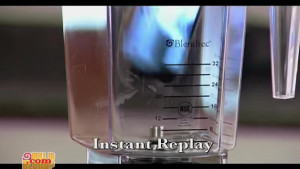 Stephen Semple: Will a hockey stick blend? My favorite is the iPad because you actually see it still operating as it’s spinning around in the Blendtec. Will the iPad work? And the other thing is sometimes the blender failed. Sometimes it just like blew up. But that was designed with repetition in mind of how do I get the person to continually keep coming back. But the other thing that’s interesting, if you look at the Harmon Brothers videos, look at the price point of the things that it worked for. 20 bucks, 30 bucks, 10 bucks. Do you ever notice that no one has ever done this for $50,000 watch or a $5,000 air conditioner?
Stephen Semple: Will a hockey stick blend? My favorite is the iPad because you actually see it still operating as it’s spinning around in the Blendtec. Will the iPad work? And the other thing is sometimes the blender failed. Sometimes it just like blew up. But that was designed with repetition in mind of how do I get the person to continually keep coming back. But the other thing that’s interesting, if you look at the Harmon Brothers videos, look at the price point of the things that it worked for. 20 bucks, 30 bucks, 10 bucks. Do you ever notice that no one has ever done this for $50,000 watch or a $5,000 air conditioner?
Jeff Sexton: Yeah, I think the most expensive thing they’ve sold has been like a $1,200 smoker or something.
Stephen Semple: Right. When we also take a look at those techniques, they are generally speaking impulse type purchases. They’re purchases that do not take a lot of thought to go and purchase. It is not a $50,000 watch. It is not a $7,000 air conditioner. It is not a $40,000 new metal roof.
Gary Bernier: So it’s not a grudge purchase?
Stephen Semple: It’s also not a grudge purchase. It is something you go, “Hey, you know, that’d be kind of cool to have around the house.”
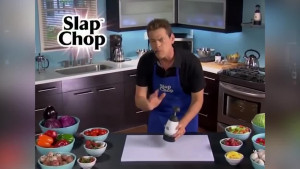 Jeff Sexton: Well, yeah because there’s two types of direct response. There’s people who are consciously in the market and people who can be persuaded to be in the market, right? [laughter] Nobody ever woke up in the market for a slap chop. “You know what I want…” It doesn’t happen. They get entertained and they say —
Jeff Sexton: Well, yeah because there’s two types of direct response. There’s people who are consciously in the market and people who can be persuaded to be in the market, right? [laughter] Nobody ever woke up in the market for a slap chop. “You know what I want…” It doesn’t happen. They get entertained and they say —
Gary Bernier: I have to disagree with you. I woke up, I wanted ShamWow. I don’t know why, but I woke up from my dream and I wanted a ShamWow. [laughter].
Jeff Sexton: Alright Gary, I stand corrected.
Stephen Semple: In fairness to Gary, when he heard the name ShamWow he was thinking about something dirty. [laughter]
Jeff Sexton: But those are different, right? Like you could sell an expensive car if somebody needs an expensive car and it’s a direct response, right. But you’re not going to entertain them on an impulse buy for something expensive. You can sell Ginsu knives or you can sell a Slap Chop. You can sell Poo-Pourri. So yeah, I think that’s a point well taken.
Johnny Molson: So there’s some food for thought for you. What do you think, please add to the comments to the YouTube video, or you can send an email to any one of us.
- Getting a Foot in the Door — Of Perception - November 27, 2025
- What Digital Superstars Know About Offline Advertising - November 17, 2025
- Unmistakable: A Tale of Two Boots and Branding Done Right - November 8, 2025
- Marketing Has a Physics Problem - December 3, 2025
- AI is OK - August 14, 2025
- Emotion in Advertising Equals Dollars in Business - December 3, 2024
- Social Media Sucks Today - July 19, 2024
- Happy Happy, Joy, Joy - June 19, 2024
- I hope I can turn you into a fan! - October 19, 2023
- Tipping Point of Retail and the S-Curve - July 22, 2021
- Four Winning Retail Strategies for 2021 - February 11, 2021
- Lambo vs Lear. Plot the growth curve for your business. - October 23, 2020
- Bonding Not Branding - May 1, 2020
- The 7 Most Common Media Buying Mistakes - February 19, 2020
- Billboards, Outdoor, and Ambient Advertising - January 23, 2020
